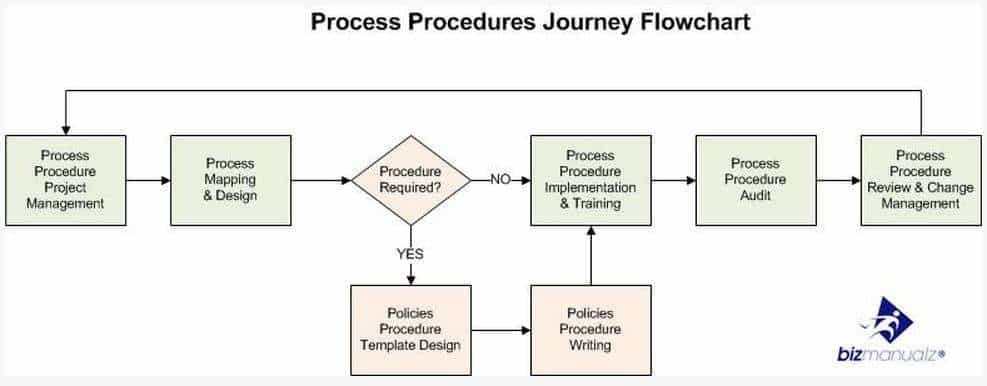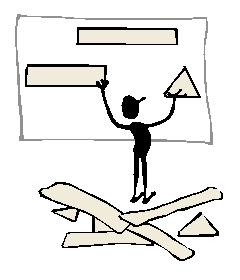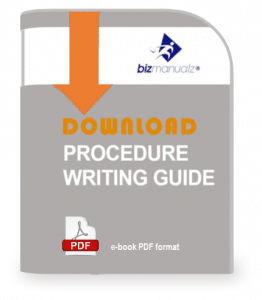How do You Develop Procedures Quickly?

When many of us see change coming, we’re not sure what to do. We sometimes fear or mistrust change, or we put off big problems because they’re “too much all at once”, and we stick with outdated, inefficient tools, methods, and processes. How do You Develop Procedures Quickly?
Ten-Step Program To Developing Procedures Quickly
We sense that the way we go about developing procedures isn’t producing satisfactory results, yet we keep at it. We can’t afford to continue doing what we’ve been doing if we’re to remain competitive. Listed below are 10 ways you can develop procedures quickly.
1. Understand the process – walk through it (literally) and map it out. See for yourself where the bottlenecks are. Determine where your resources are going to waste. If an activity doesn’t add value, customers won’t pay for it.
2. Estimate the resources you need to craft the procedure (people, time, etc.). Set your goals and milestones.
3. Now, document (author) the process. For the best effect, combine pictures and words: either is good but together, they’re great!
4. Once you author the procedure, have the process “doers” and their manager review it.
Note: Here is where a document management system like Onpolicy can improve your review process.
5. Based on the results of the procedure review, revise the procedure.
6. Repeat #4 and #5 once. Resist the urge to keep “tweaking” documents before releasing them – there is no such thing as a perfect procedure.
 7. Next, have other interested parties review the procedure (for example, the managers of the processes immediately before and after the process in question).
7. Next, have other interested parties review the procedure (for example, the managers of the processes immediately before and after the process in question).
8. Revise the procedure one last time, if necessary.
9. Gain final approval of the procedure from top management. In the case of a small business (or SMB), that might be the owner, the president, your chief financial officer, and others. Top management needs to be involved because every process – hence, every procedure – is a reflection of the company’s vision, mission, and objectives.
10. Once the procedure is approved, release it to the company. Releasing a procedure involves:
- Announcing the procedure to the entire company;
- Circulating it, or making sure it’s readily accessible to employees;
- Training the doers – those responsible for carrying out the procedure, and their managers; and
- Explaining the procedure to those who may be affected indirectly (for example, one process forward and one back).
Keep Procedures Fresh and Meaningful
As we said in step #6, perfect procedures don’t exist. The business environment changes, your company changes, and your system set to develop procedures quickly needs to reflect that. Once you’ve released a procedure, there are two more things you must do:
Conduct a periodic procedure review. You review a procedure when something really big comes up that has a direct impact (a new or revised regulation, an audit finding, a new owner, etc.), correct? Oftentimes, nothing comes up – or we don’t notice when they do. That’s why we need to routinely review procedures (a rule of thumb is to review annually).
After the review, revise the procedure (if needed), review it, approve it, and release it.
Bizmanualz Can Help You Create Procedures in Half the Time
Now you know how to make the process of developing procedures more efficient, but do you have the time to research business best practices for many common business processes or everyday job tasks? Even if you did you could end up writing hundreds of procedures for your business.
Yet not having procedures could be a big problem. You could end up with vital company knowledge walking out the door and leaving the next employee to start a new learning curve. Of course, management and shareholders have to pay for this business waste that includes: re-training, turnover, and re-work.
The Benefits of Policies and Procedures
Each individual procedure contains a Policy, Purpose, Scope, Responsibilities, Definitions, References, and detailed procedure activities along with supporting forms, checklists, and job descriptions that will:
- Simplify Job Training. Use your policy and procedures manuals to train new employees.
- Standardize for Consistency. Reduce errors and get all of your employees on the same page.
- Conform to Compliance. Ensure regulations and standards have required documentation.
- Eliminate Excuses. Employees will know exactly what to do!
- Save Money. Faster training, compliance, and consistency increases your company’s productivity and saves money.
Quickly Document Your Business Processes
Researched by experienced business professionals, Bizmanualz prewritten policies and procedures templates will help you quickly document your business processes. Every procedure documents common business processes, job descriptions, and best practices. Instead of stressing over how to write a procedure, just edit one of the example procedures using Microsoft Word and you are done.
Start documenting your business model, everything you need is included. These prewritten guides cover all company operations with coverage of each subject area designed to guide you through the planning, formatting and writing of your manuals.















